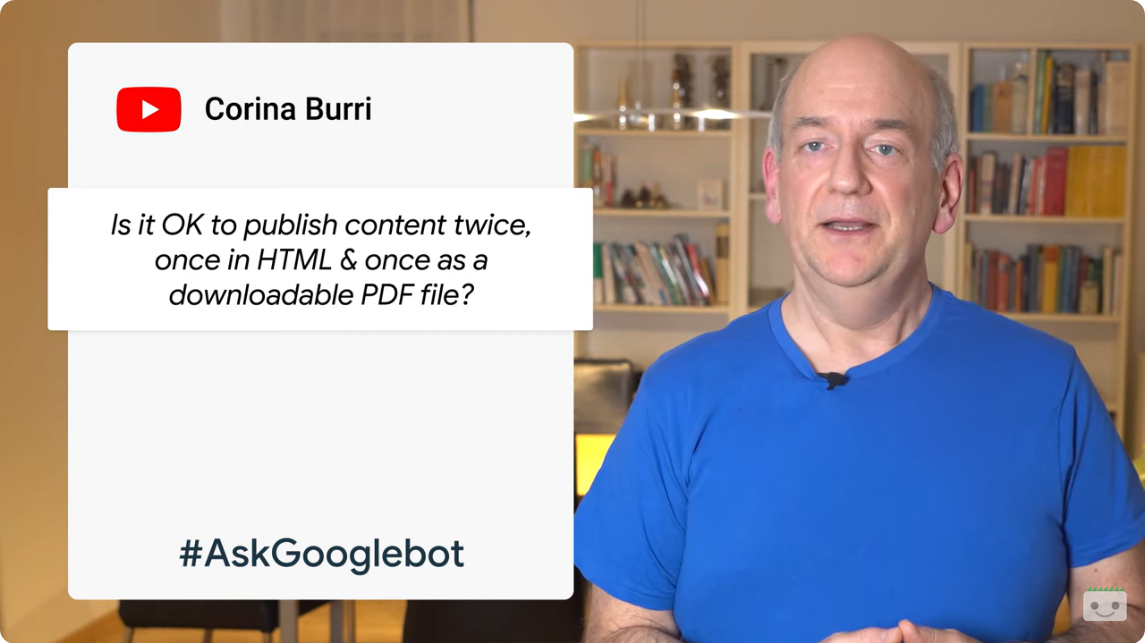Google clarifies: you can serve both HTML and PDF pages
Managing a site’s content is like an ongoing challenge: not only can it sometimes be difficult to come up with ideas for articles and plan an effective editorial calendar, but also the very choice of formats in which to publish information can give headaches and is never neutral, because it can affect the visibility and effectiveness of online communication. In particular, one of the most frequent doubts concerns the management of the same content in HTML and PDF formats, which could cause some damage to organic visibility if not done correctly.
Is it possible to publish in both PDF and HTML formats?
This issue has often been the focus of Google’s discussions, and these days John Mueller returned to it during one of #AskGooglebot’s video pills on YouTube, in which he responded to a user who asked, precisely, whether publishing content in both HTML and PDF formats is a good SEO strategy.
The answer from Google’s Search Advocate is (for once) stark: it is absolutely fine and there is no problem for Google if we publish content twice, once in HTML and once as a downloadable PDF file.
This confirms what Mueller himself had already said in 2010 (as recalled by Barry Schwartz), that Google can handle pages served in both PDF and HTML versions without too many complications.
It is possible for Google to publish twice (in different formats)
In general, Mueller explains today, Google systems can find both types of pages and index them separately, even if the words on them are technically duplicate.
More: the two pages can be displayed independently in search results.
Usually content is only available in one format or the other, simply because it is the one that most intercepts the needs of the audience, the Googler adds. For example, if we publish a restaurant menu, people will probably prefer to view it on their smartphone, and so serving a regular HTML page is usually the best choice.
On the other hand, if we publish a specific form to be filled out and signed in paper format, using a PDF file may make more sense.
And some types of content might work well in either format, such as a guide or case study available for review in paper form.
Google’s suggested best practices for “duplicate” pages in different formats
From a practical standpoint, Mueller adds other useful details for sites in this condition.
If Google’s systems see the two pages as duplicate content, there is no particular visibility risk to the site as a whole, because they usually simply link back to the HTML version of the page, ignoring the PDF version.
We do have control over this, however, because we can, for example, use a “no index” HTTP header or robots meta tag to block either version from being indexed, or even use the rel canonical link element to communicate our preference as to which URL to show first.
Also, as a final suggestion, Mueller urges as a good practice to include a link to the website in the PDF, so that people can “find their way back” and not get stuck in the PDF, so to speak.
HTML and PDF: two different formats to be aware of
And so, publishing HTML and PDF content on the same website is feasible and need not create SEO problems, as long as you carefully manage the formats and follow the best practices suggested by search engines.
Indeed, with a thoughtful strategy, it is possible to leverage the strengths of both formats to improve the accessibility and dissemination of information online.
HTML is the standard markup language for creating Web pages-it is flexible, accessible, and optimized for search engines. Content in HTML is easily indexed by Google, which means it can be understood and ranked effectively by the search engine algorithm. On the other hand, PDF is a portable file format that is ideal for distributing documents that retain their original formatting. However, PDFs can present challenges in terms of SEO: although Google can index them, sometimes these files lack some of the inherent SEO features of HTML pages, such as header tags and internal link structure.
As for the crux of the matter-and thus the coexistence of HTML and PDF on the same website-surely the main concern is duplicate content. That is, if an article is published both as HTML and as a PDF without proper precautions, we risk dispersing SEO value between two separate URLs featuring the same content, confusing search engines and potentially reducing the ability of pages to rank effectively.
Google’s reassurances and guidance should help us avoid duplicate content problems by ensuring with canonical that search engines can identify and prioritize the most relevant content, but in reality the bottom line is that HTML takes priority anyway and the true risks to the site are low.


